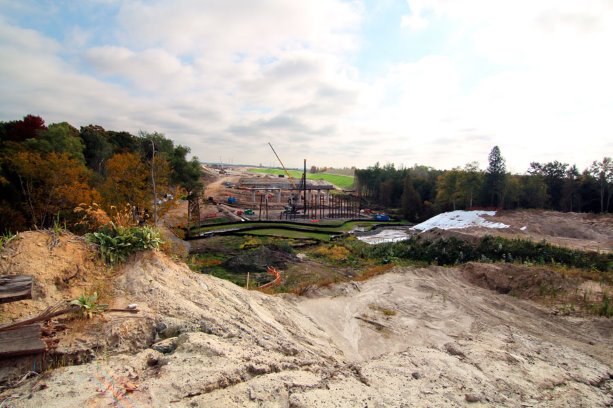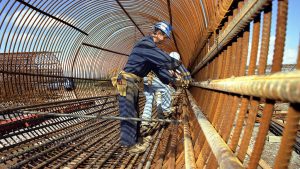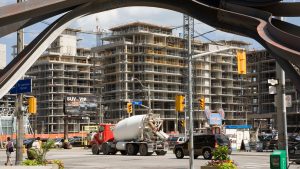Old trolley lines. Shipwrecks. Human remains. At one time, such finds on a construction site might have delayed work for weeks or even months as archeologists were called in to investigate.
That was the case in 2003 when human remains found during construction of a new agricultural show facility at the Western Fair in London, Ont. stalled work for seven weeks. Archeologists linked the remains to an old cemetery.
Today, identifying archeological hot spots usually happens long before construction begins.
Indeed, many of Ontario’s larger municipalities, including London, maintain archeological master plans.
"It is just a really good planning tool," says Scarlett Janusas, an archeologist based in Tobermory, Ont. who helped develop the province’s first such master plan in 1993 for the City of Waterloo.
The plans are beneficial, she notes, because they provide "a quick stop-gap measure. You look at the map and you go, OK there’s a potential hot spot."
Janusas says the Ontario Ministry of Tourism, Culture and Sport does not require municipalities to make the plans. The ministry enforces the section of the Ontario Heritage Act that deals with the conservation of archeological resources.
The ministry does, however, drive the assessment process and prescribes specific steps, including background studies, site studies of varying intensity to identify archeological resources, their location and significance and steps to mitigate the impact of development, such as documenting, removing and storing artifacts.
According to the ministry website, a municipality or another approval authority triggers assessment as a condition of development approval.
Any public development projects that require a class environmental assessment, such as power projects, road construction and other infrastructure projects, triggers the process too, as do quarry and forestry activities and pipeline installations.
In most cases, early stages of investigation and assessment create an opportunity to determine how to balance archeological mitigation with construction.
In Phase 2 of the Highway 407 East extension currently underway, for example, Blackbird Infrastructure 407 GP arranged for 20 sites to be investigated during 2015 and 2016, ahead of earth moving and preparation work for structures.
Blackbird, a consortium of businesses, is designing, building, financing and maintaining the extension of the 400-series highway to Clarington from Oshawa, Ont.
The assessment used three archeological firms, said Blackbird spokesman Brian Fox in a December email. Most of the findings were of homesteads that ranged in age from the 1830s to the early 1900s, he says.
"These artifacts and settlement pattern assist in the reconstruction of early pioneer settlement in Durham Region," he adds.
Fox says Blackbird was responsible for investigating the Euro-Canadian sites. The Ministry of Transportation arranged for investigation of indigenous sites.
Artifacts were documented and removed.
During the lane expansion of Highway 11/17 between Thunder Bay, Ont. and Nipigon a few years ago, however, archeologists and construction crews opted to work around each other.
The general contractor, BOT Construction Group, "worked on other sections of the highway that were free of encumbrances," says Jim Finnigan, president of Western Heritage, the firm that did most of the excavation and documentation. In turn, "we worked around the contractors as best we could and sometimes we’d get minor conflicts and we’d all sit down and sort them out and away we went."
The investigation documented and removed artifacts from seven Paleo-Indian sites that were identified during environmental assessment. A small waterfront project in Thunder Bay last summer took the balancing process one step further by integrating archeological study with construction.
The $1.5-million project involved a road extension, realignment and the addition of a parking lot.
Assessments connected with previous development and another project underway nearby indicated the potential for the site to have artifacts linked to the waterfront location’s industrial past. But no big finds were expected in the exact location where work would take place. So the city, with provincial approval, hired an archeologist to monitor the excavation.
"We were here as monitors to ensure that if any of the pristine layers or any of the undisturbed layers were uncovered that we were there to take a look at that," says Douglas Yahn, an archeologist and national archeology and heritage discipline lead with WSP Canada Inc., the firm that did the monitoring.
"We worked really well with the contractor who was on site," he says.
The archeologist, contractor and city representatives all met before work began to determine what the contractors needed to do, what the study areas were going to be and to highlight areas that were more sensitive than others.
"We were aware of what they (the archeologists) were looking for so if at any time they were not on site and we came across something of interest we would contact them," says Silvio Di Gregorio, a spokesperson for the project’s general contractor, Bruno’s Contracting (Thunder Bay) Limited, by email.
He notes the firm was on site daily during excavation.
Having a monitor on site "had no significant effect on our operation," he says.
The project was mostly complete this fall with a second application of asphalt scheduled for the spring.
Lou Morrow, the City of Thunder Bay’s corporate project manager, counts the on-hand archeological expertise as invaluable. Although nothing of consequence was found, there was always the potential of a find.
And if something was discovered, nothing beats having a consultant to navigate the process set out by the ministry, Morrow says.
The process might be simple, "but it’s not exactly the same every time. You have to take it through your flow chart. It’s all about managing risk and taking it one step at a time."











Recent Comments
comments for this post are closed